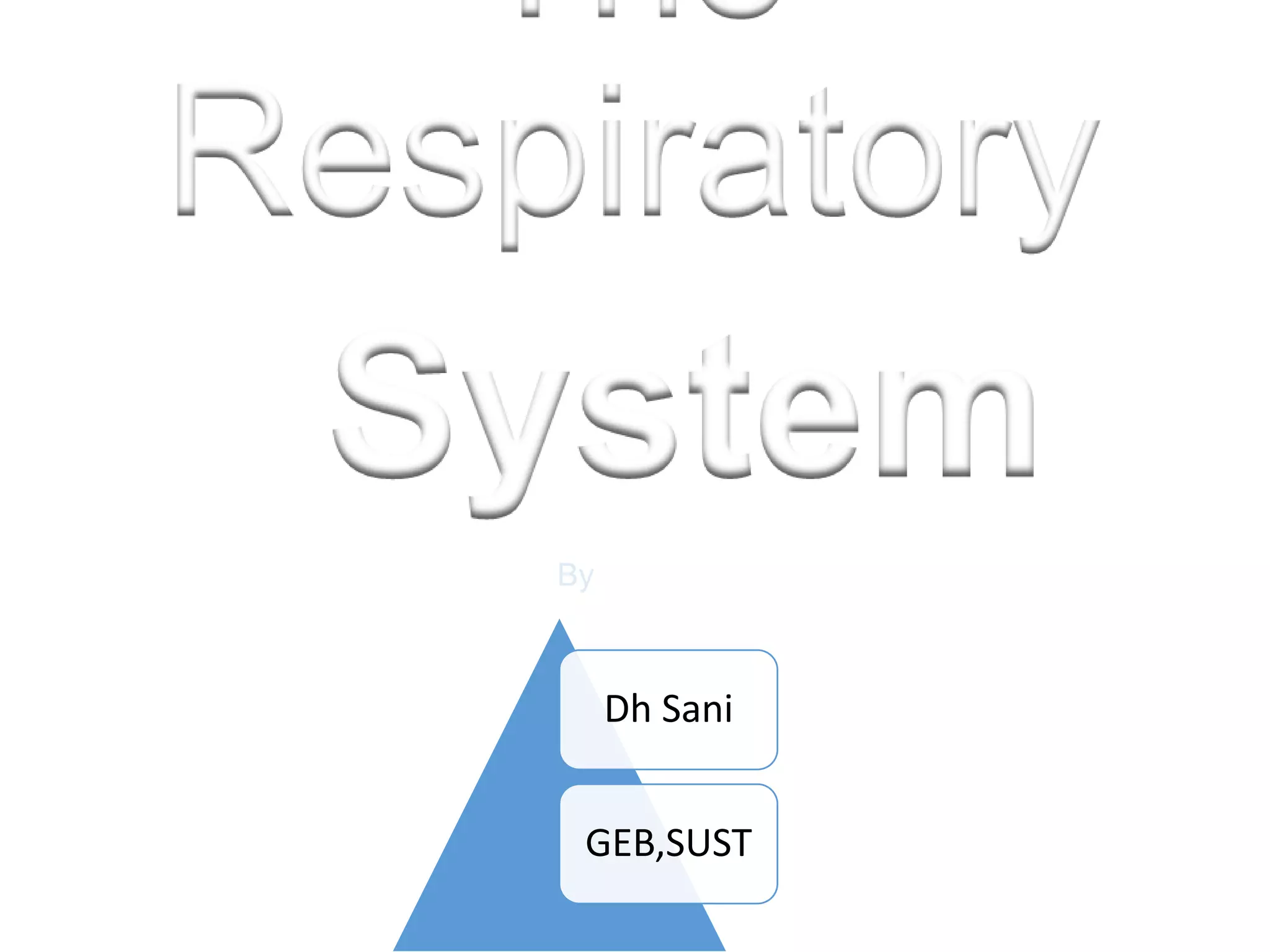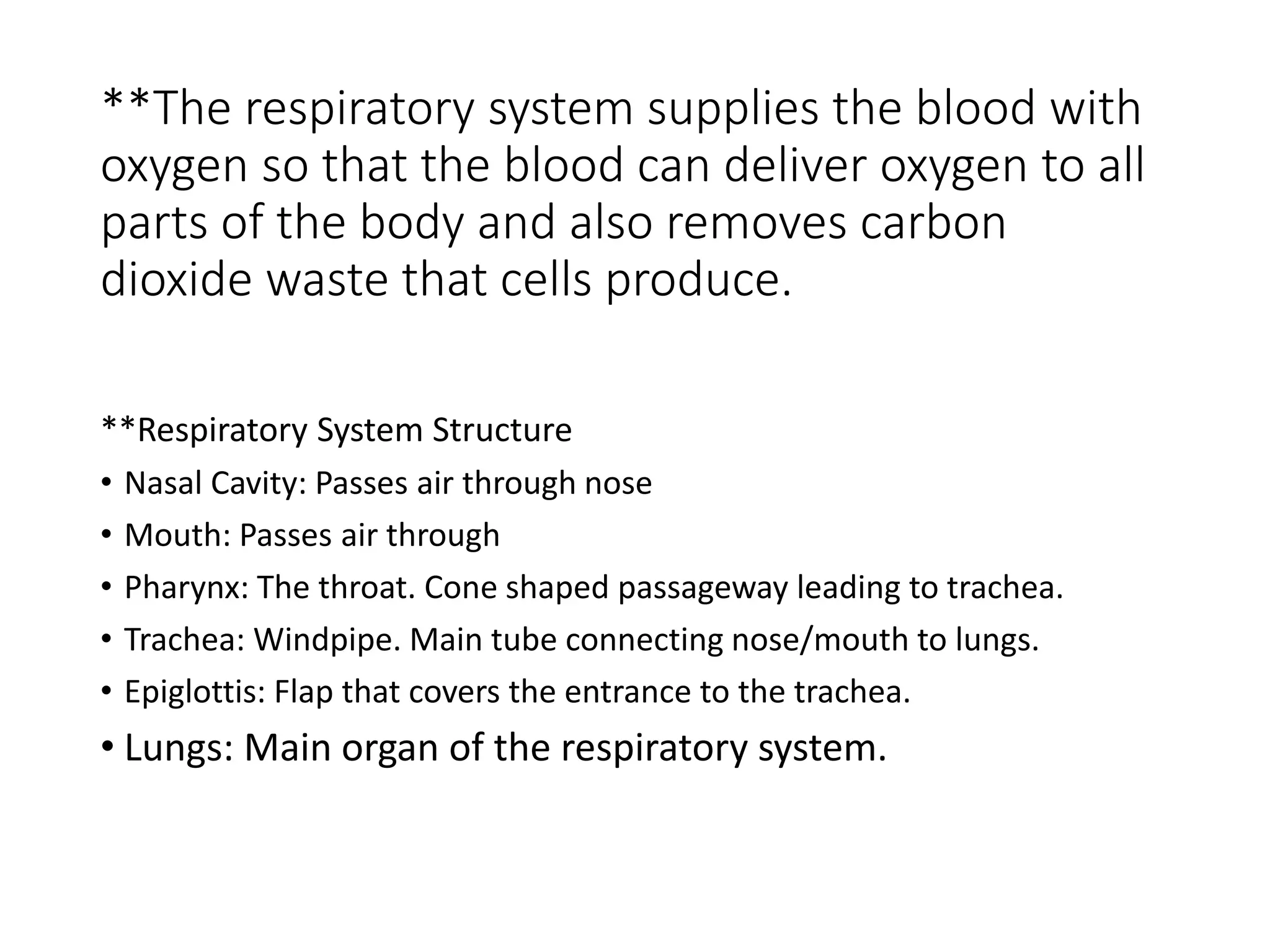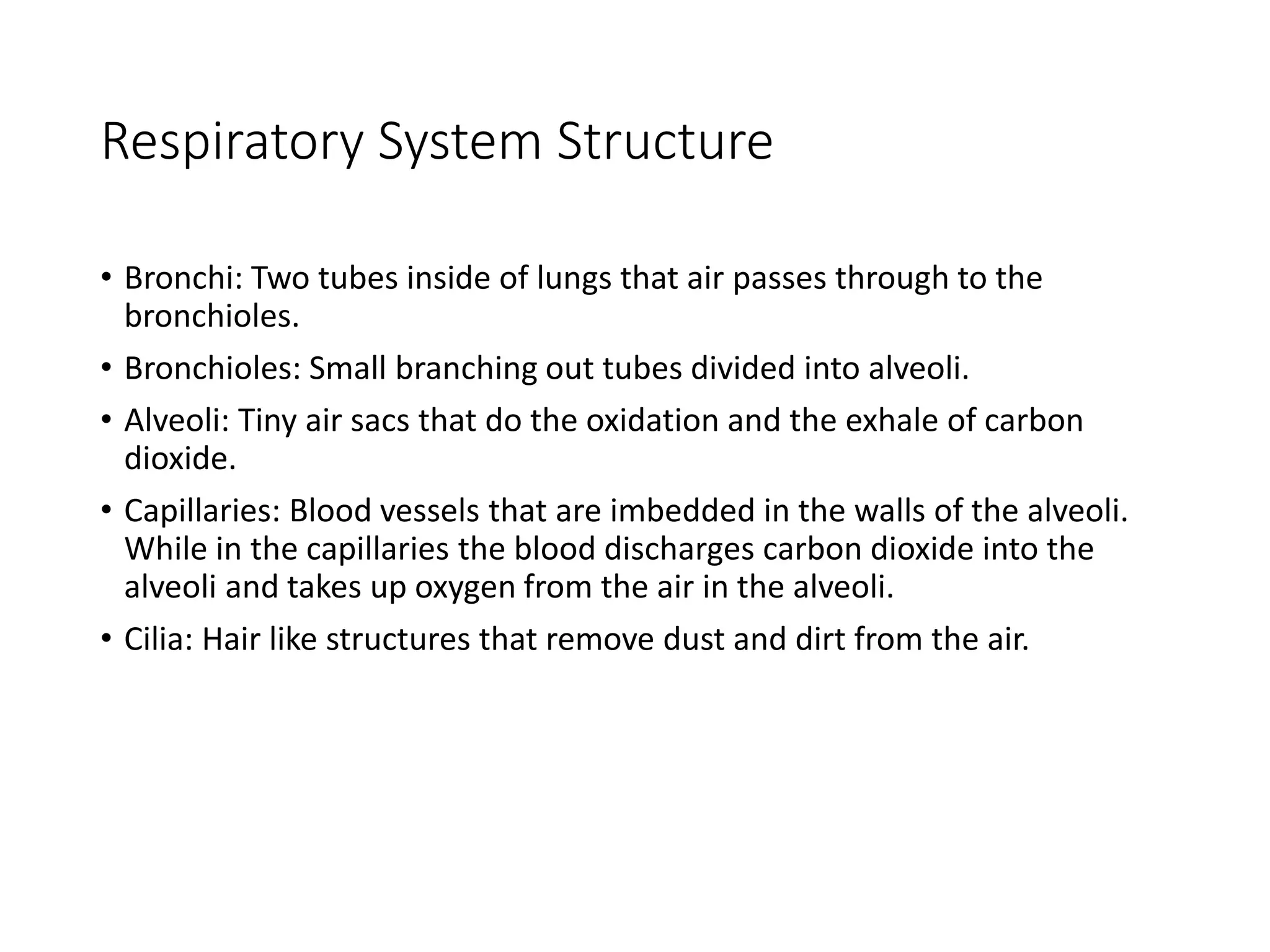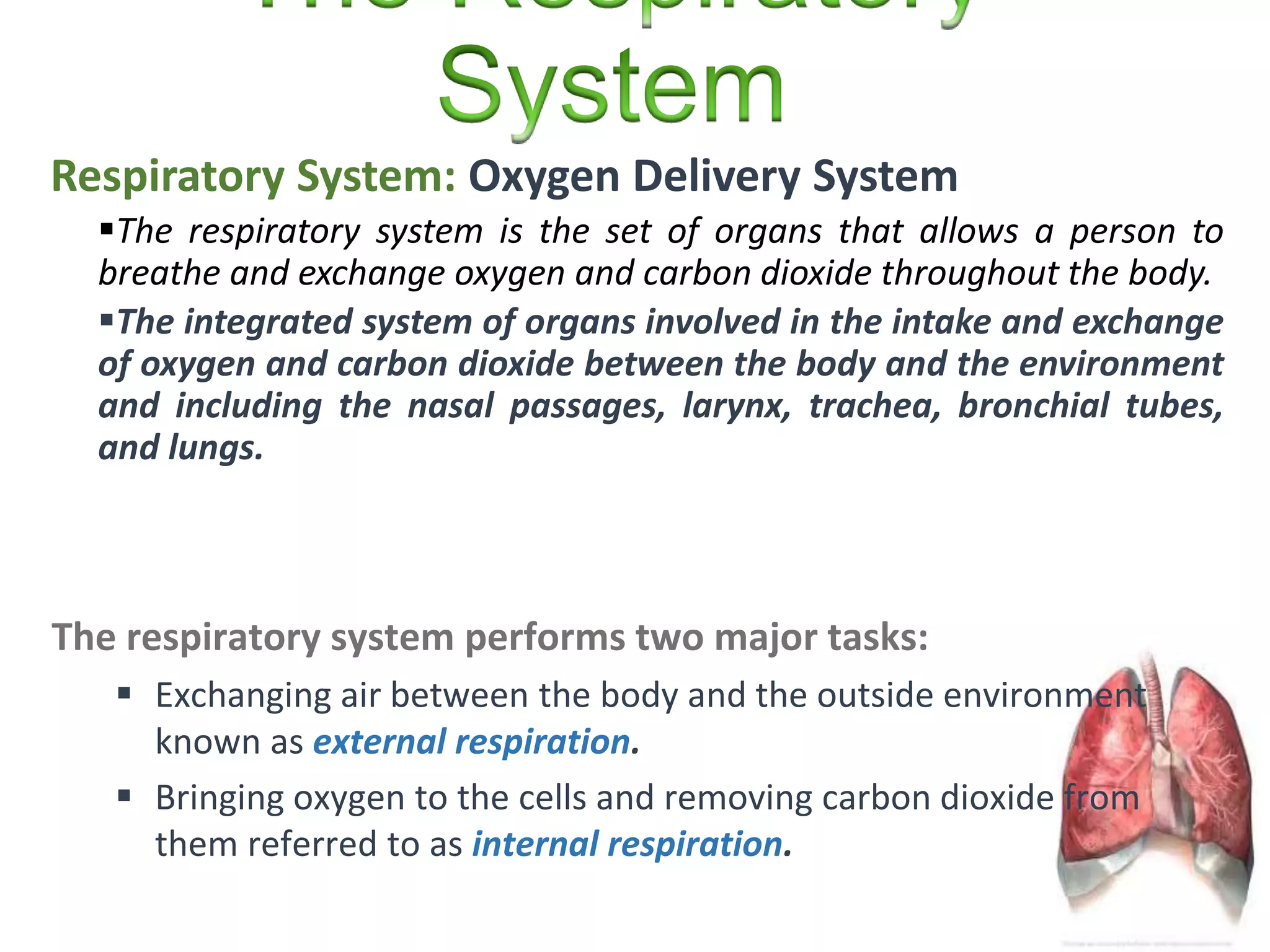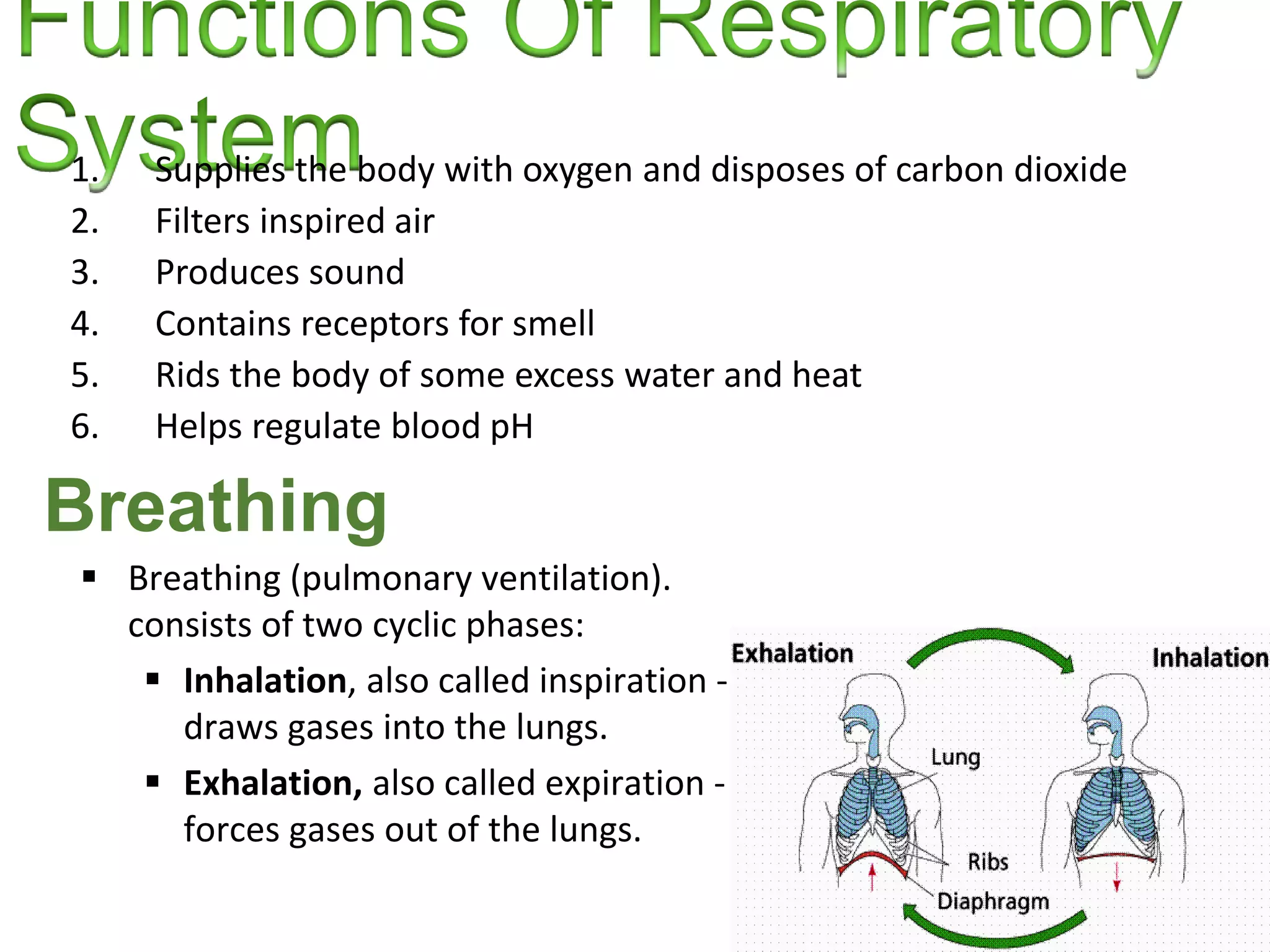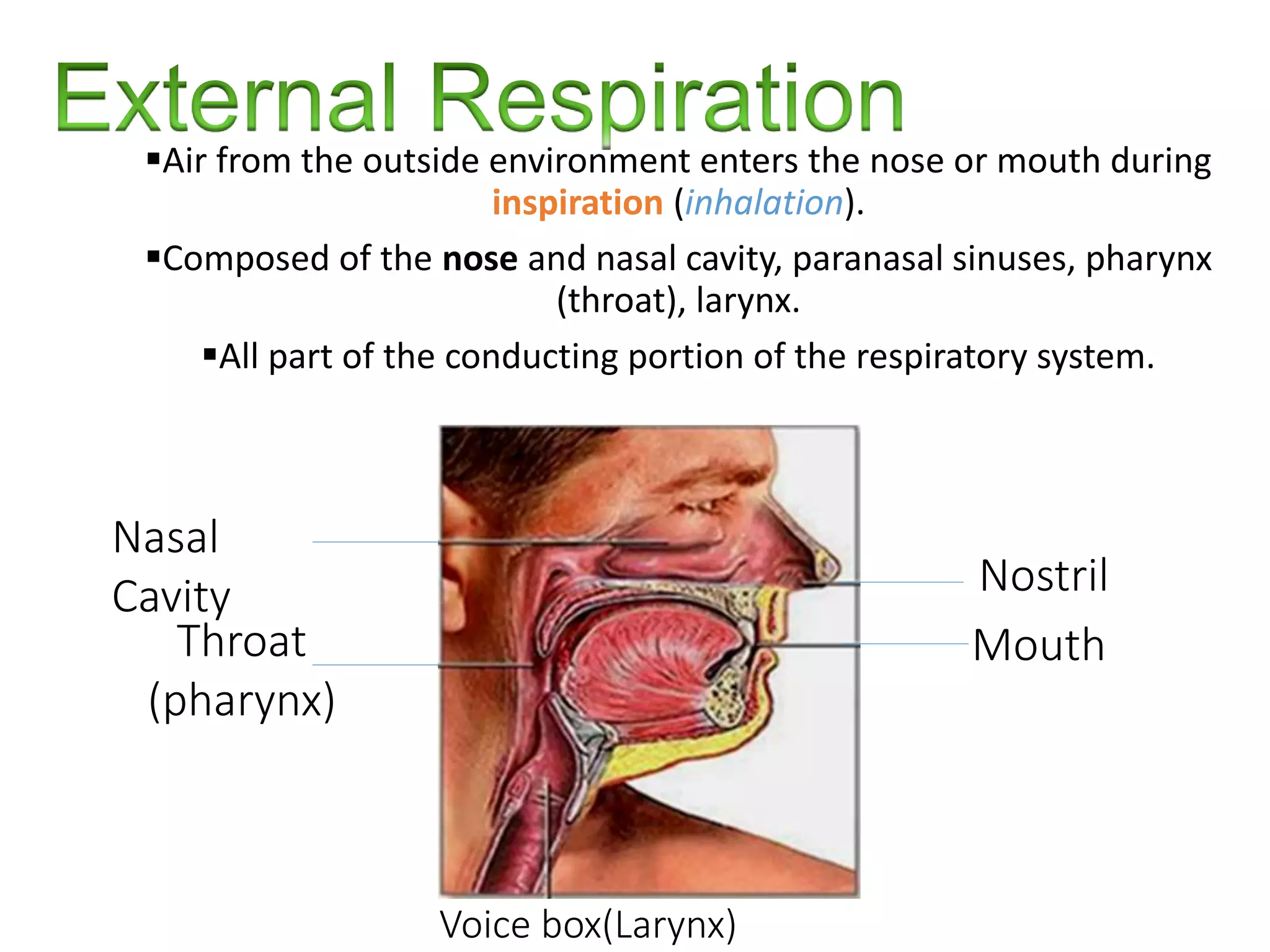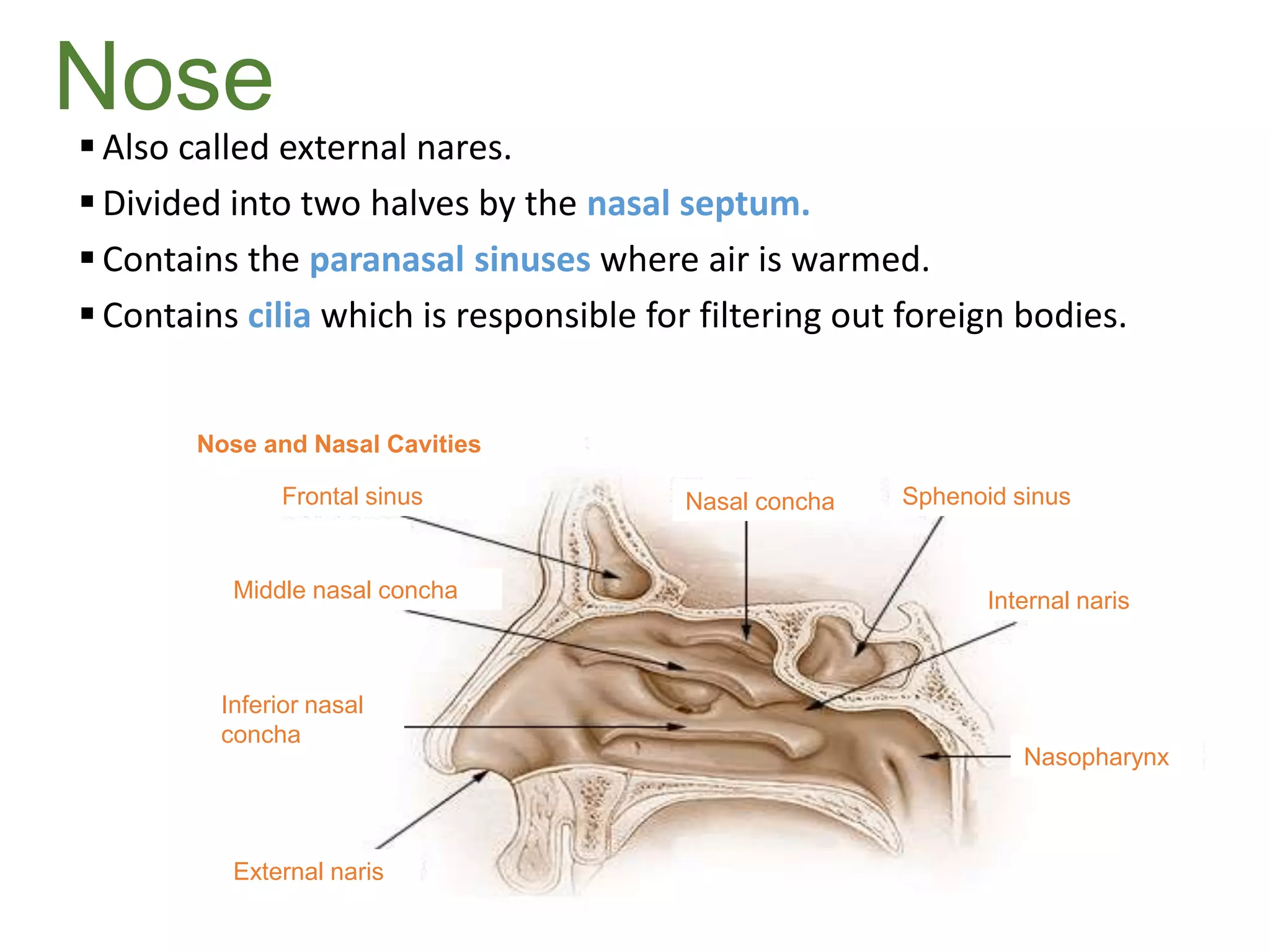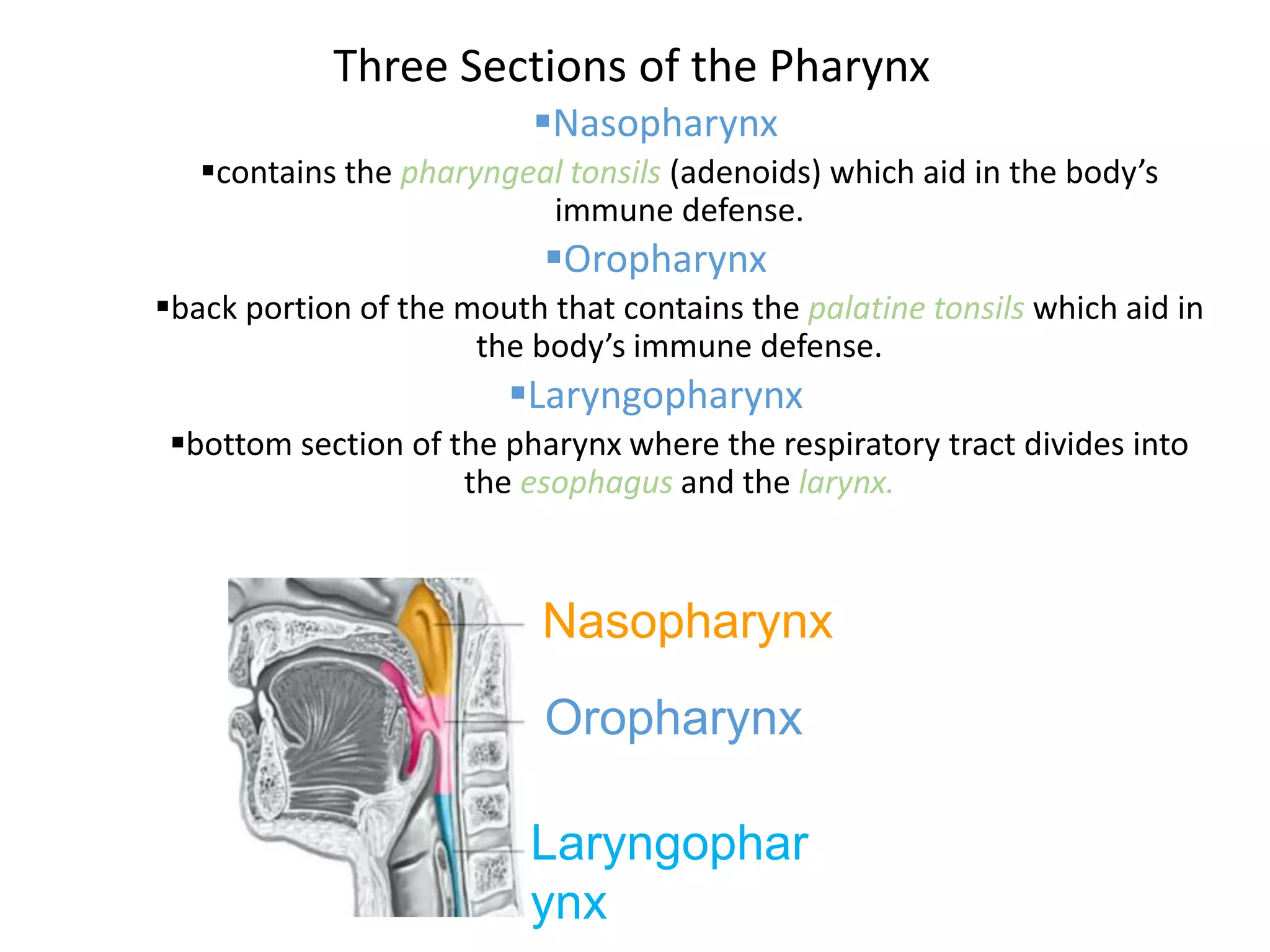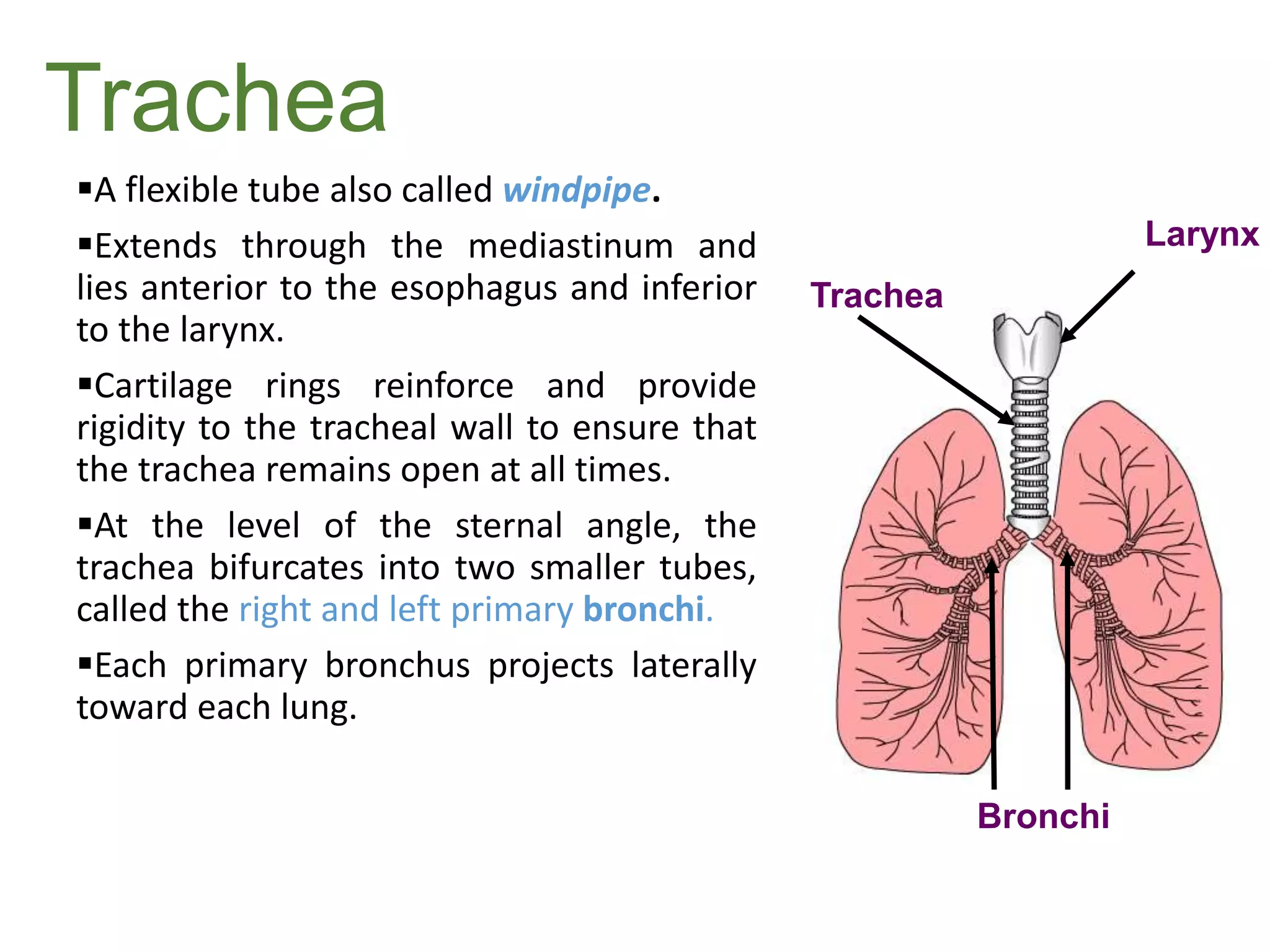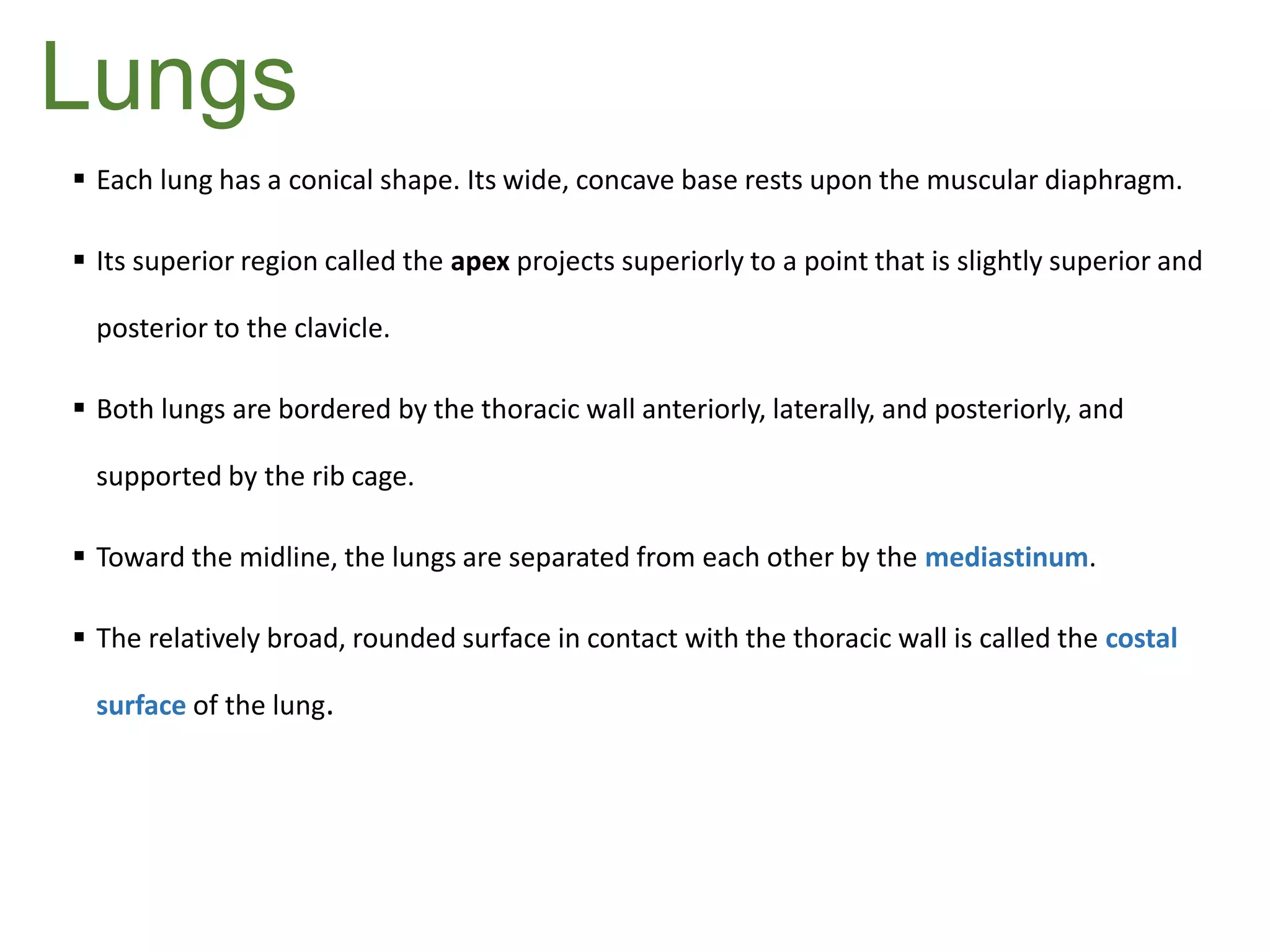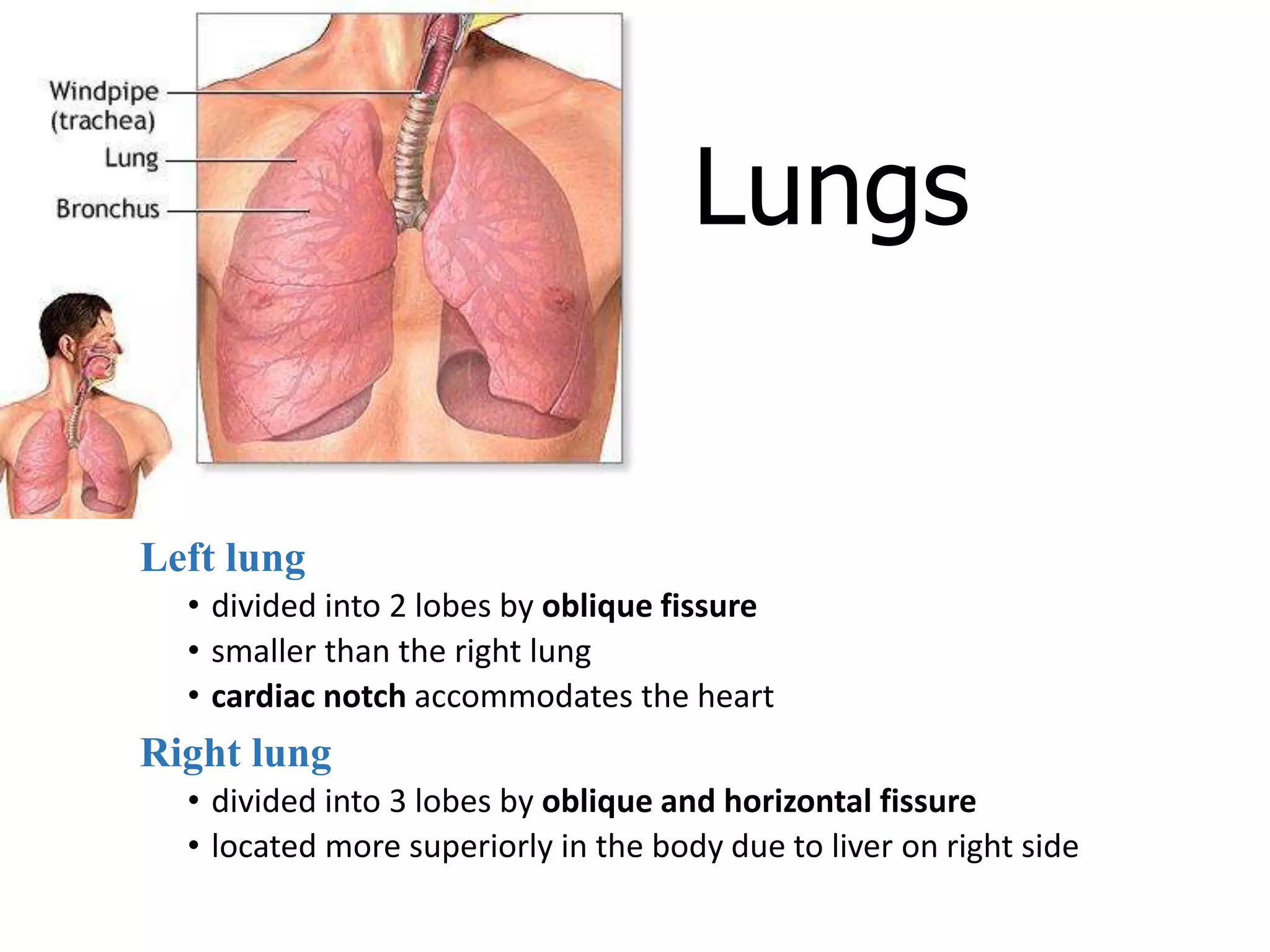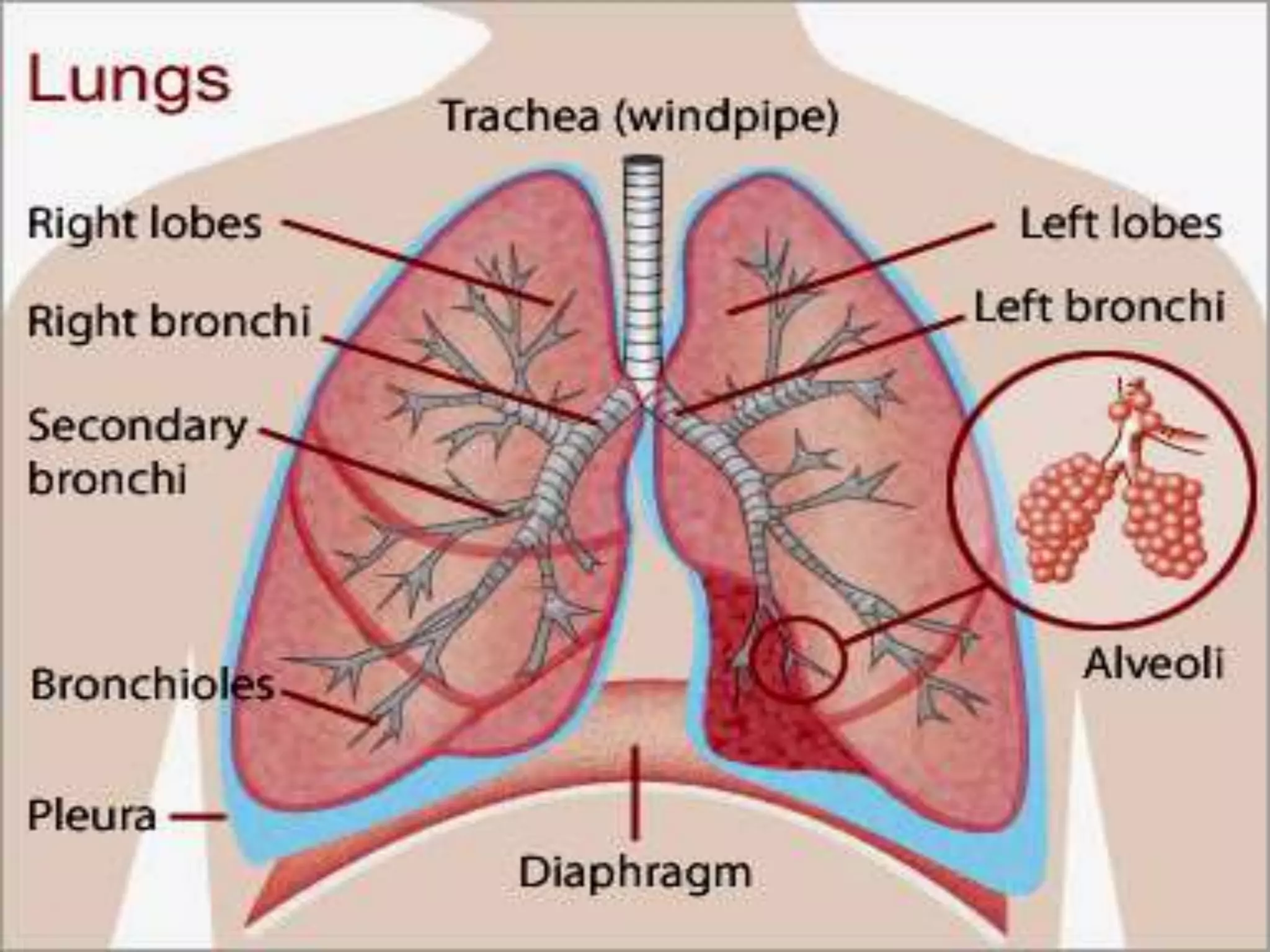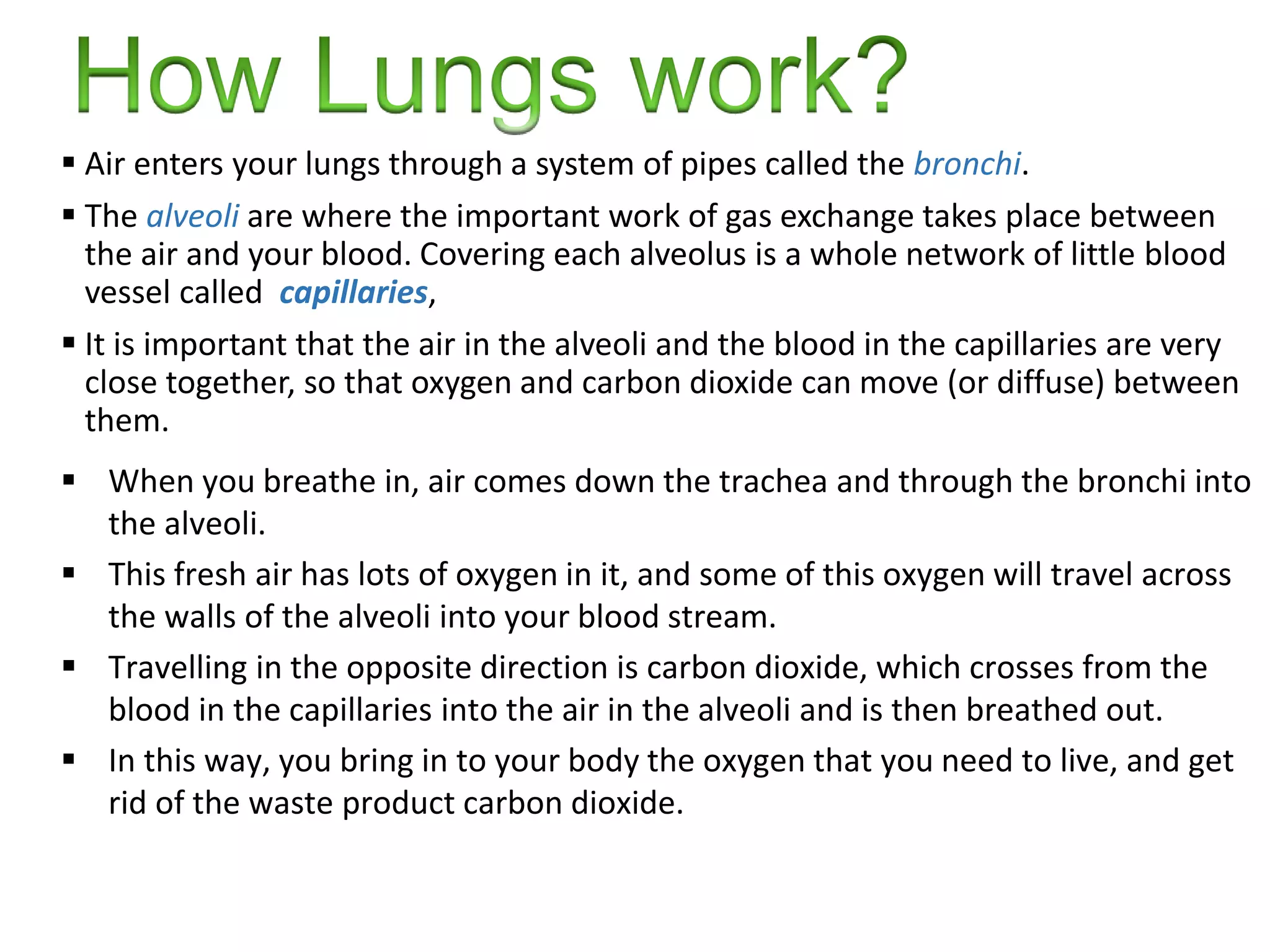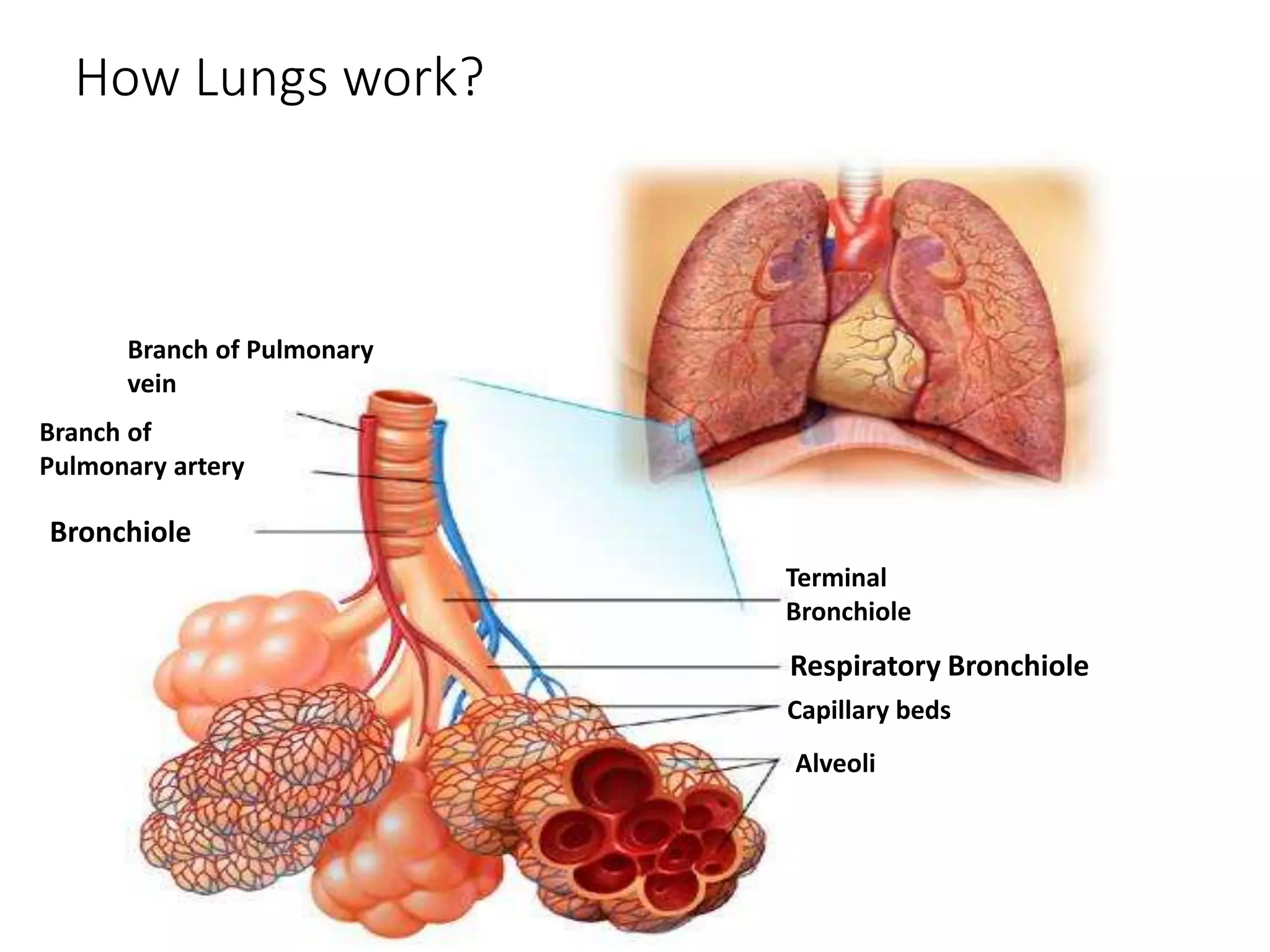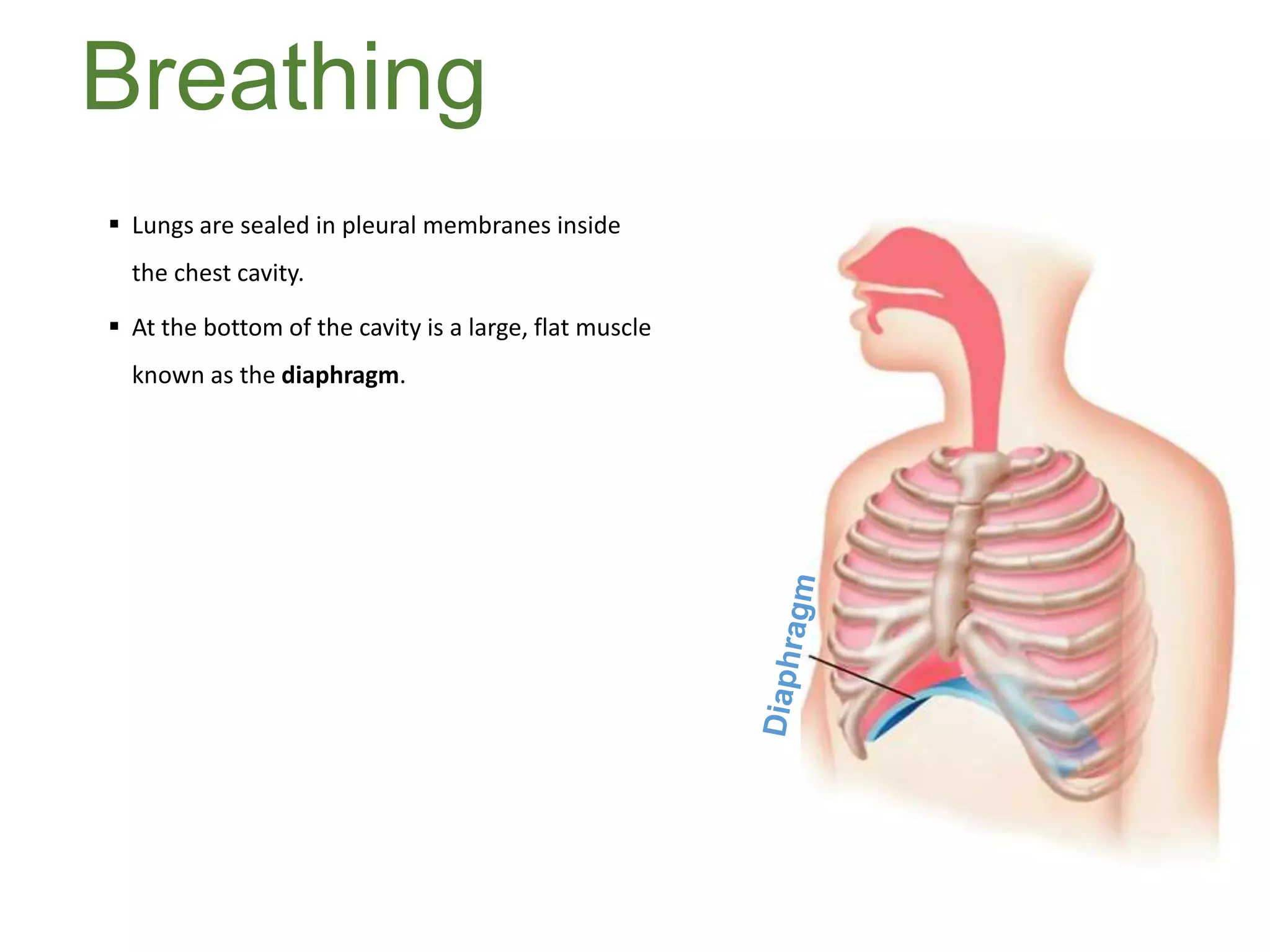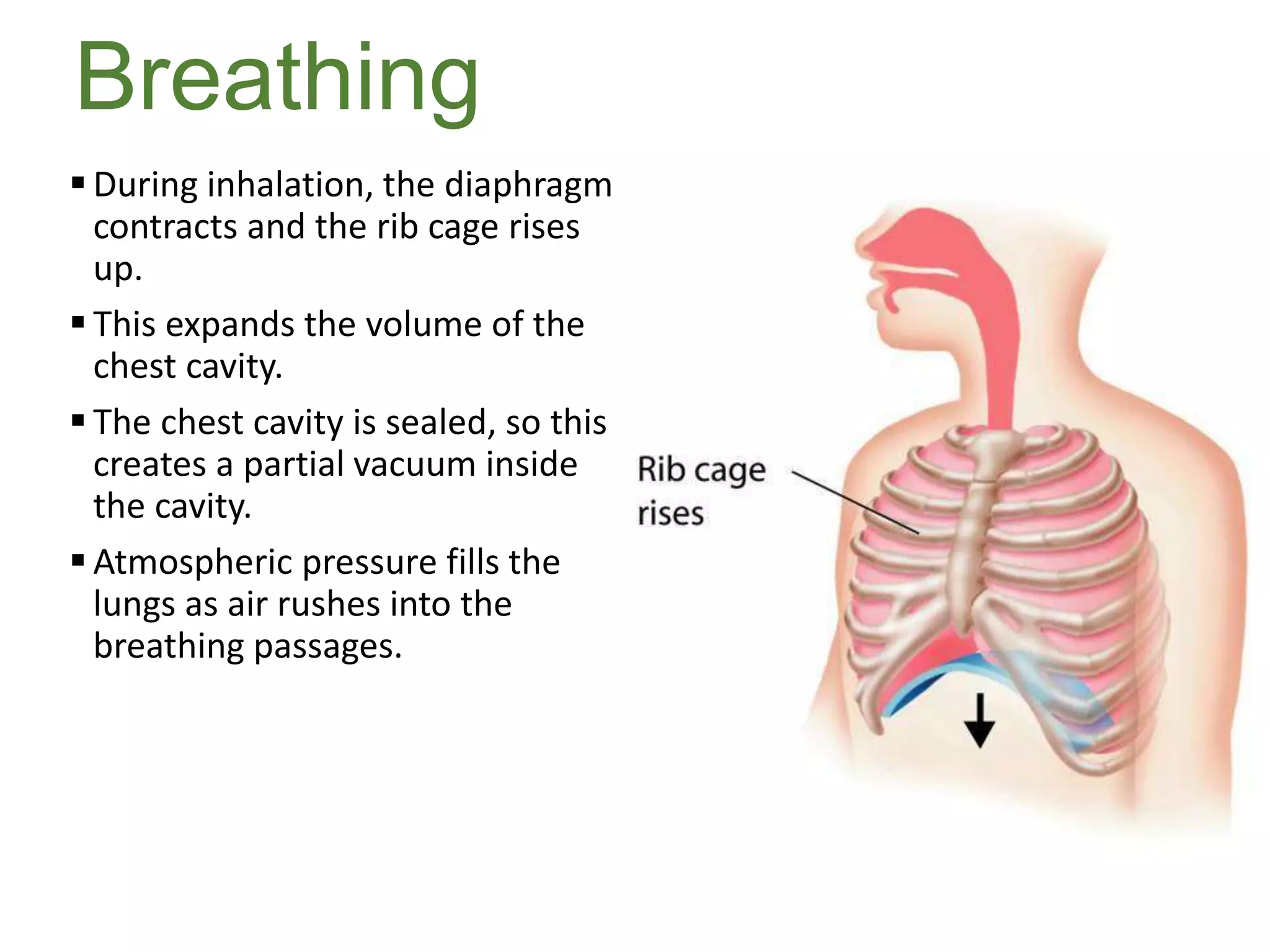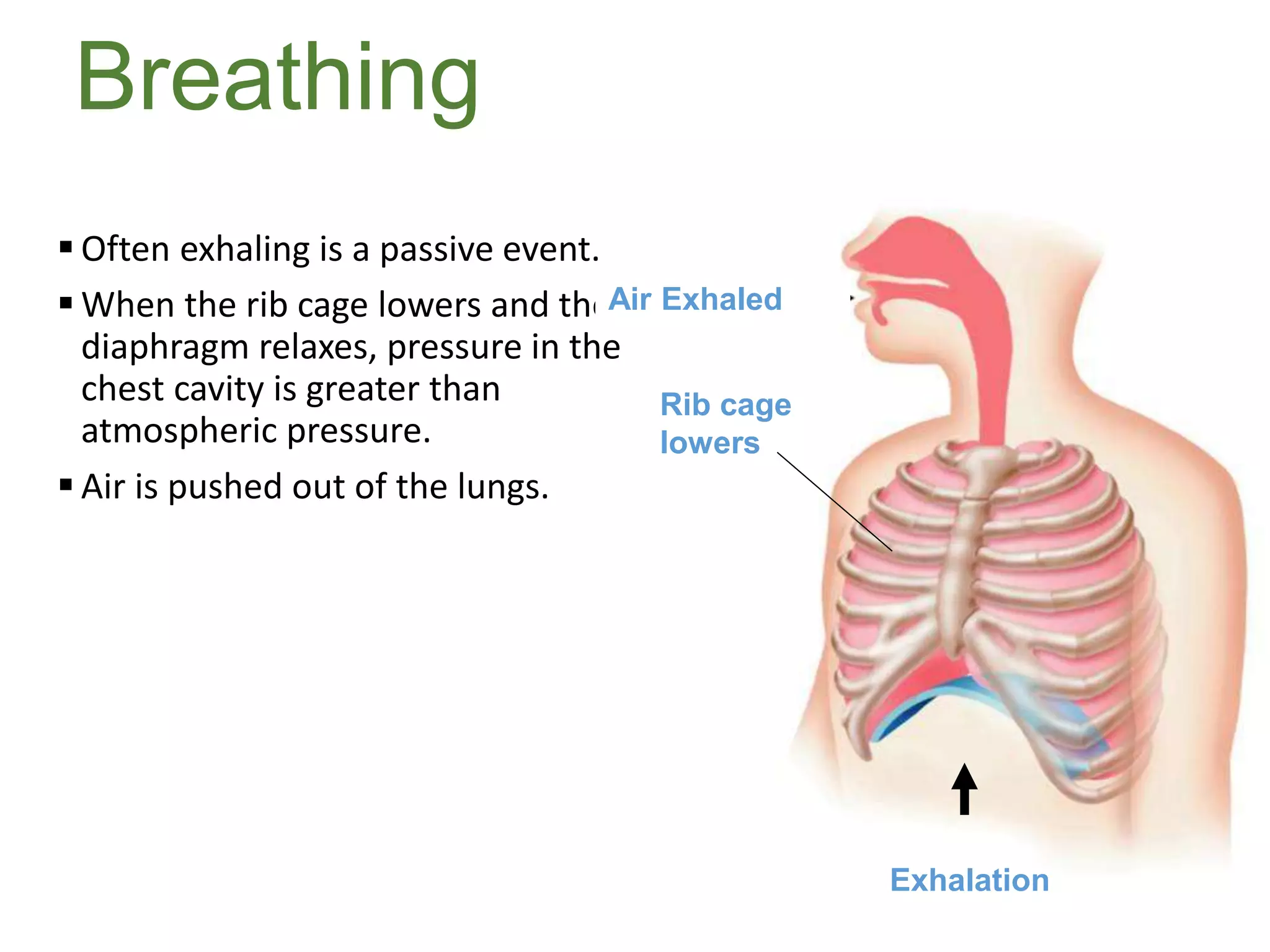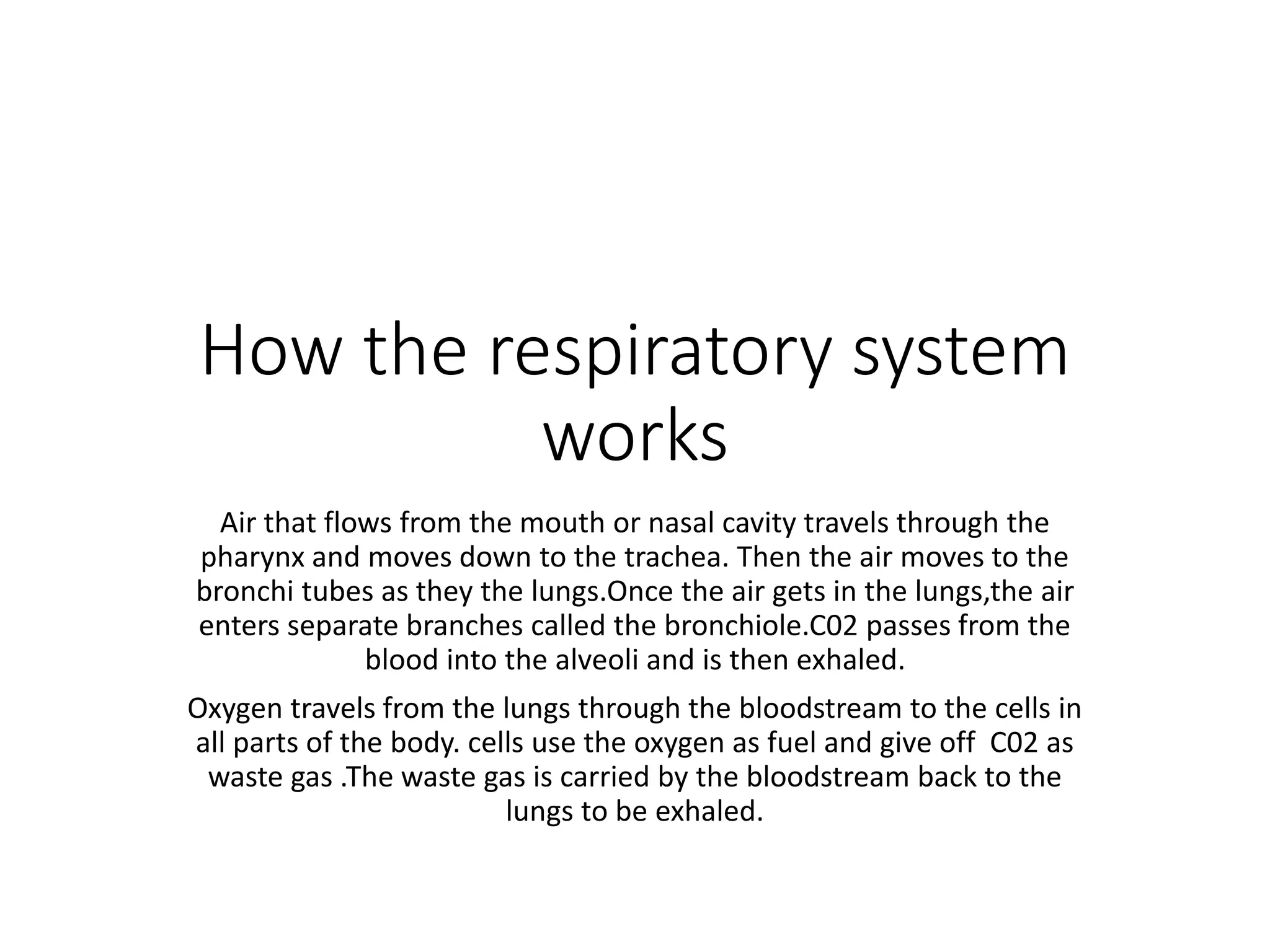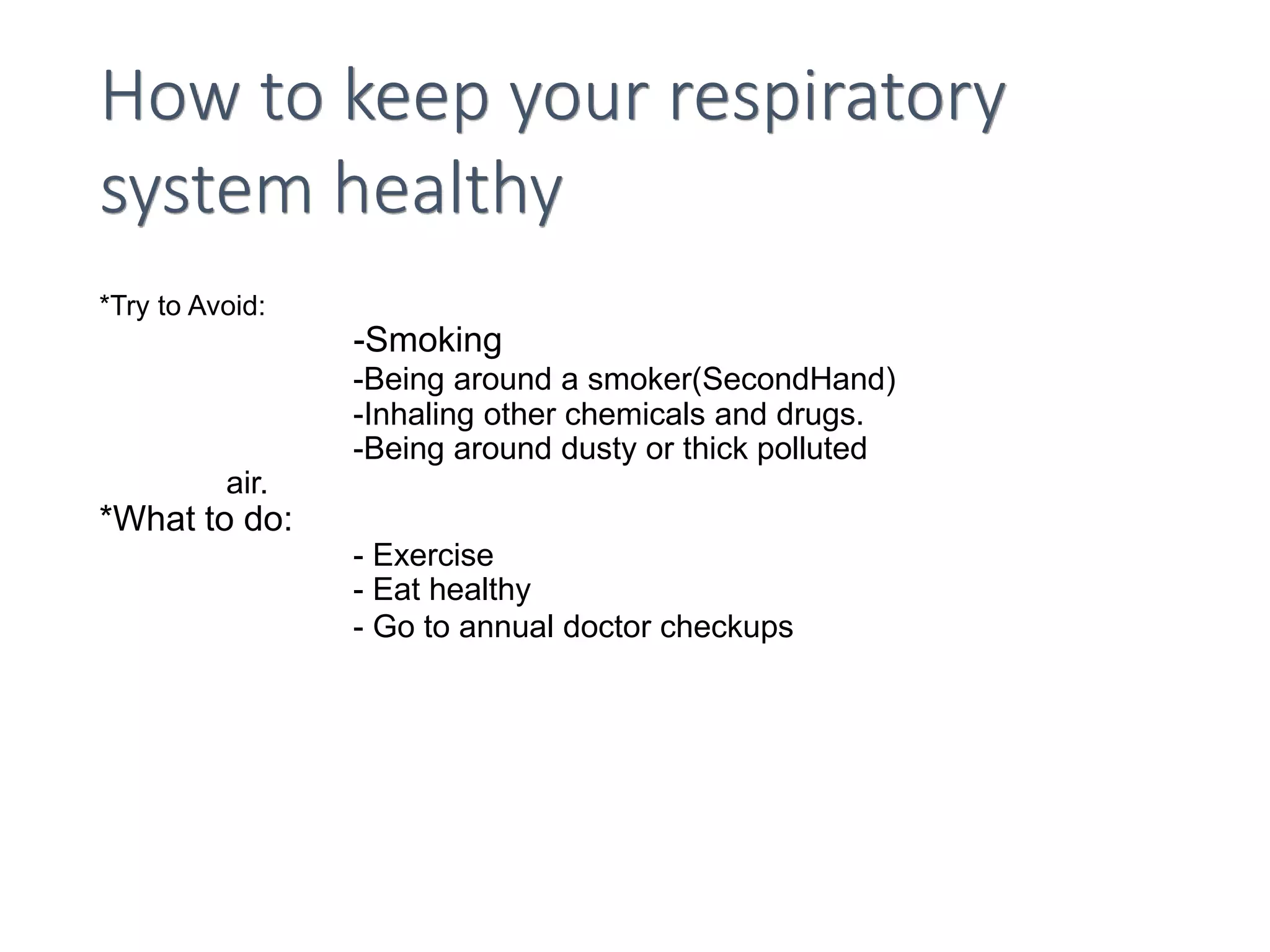1. The respiratory system supplies oxygen to the blood and removes carbon dioxide through a process called gas exchange that takes place in alveoli in the lungs.
2. It is made up of the nasal passages, pharynx, larynx, trachea, bronchi, and lungs and works through the processes of external respiration which exchanges gases between the body and environment, and internal respiration which transports gases between the blood and cells.
3. Breathing is regulated through the contraction and relaxation of the diaphragm and rib cage which expands and contracts the chest cavity to inhale and exhale air.
